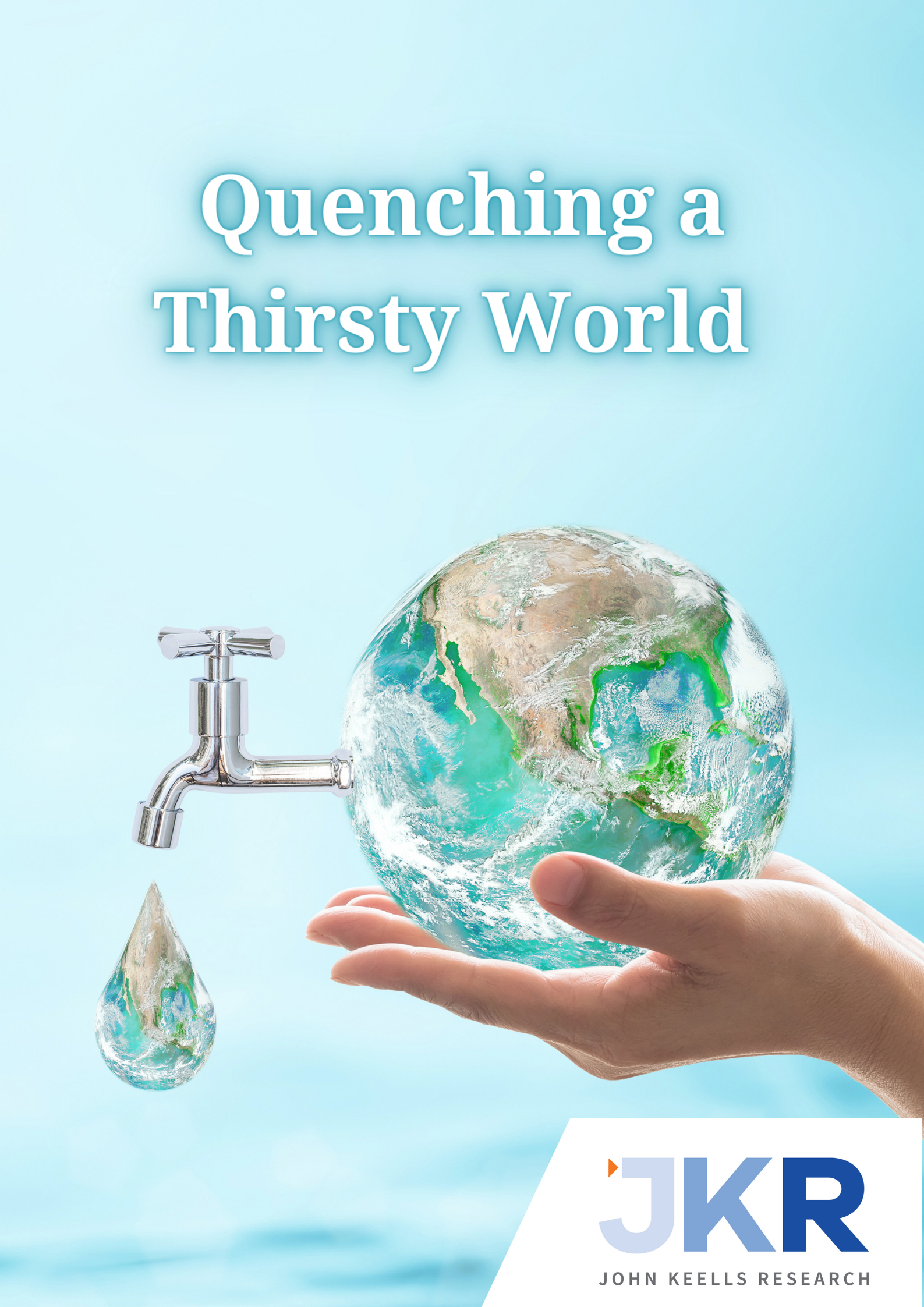Clean water is a key resource for the survival of life, and a critical factor for the development and wellbeing of our society. However, access to clean water has become a luxury in certain parts of the world. A report launched in March 2023, on the eve of the first major U.N. conference on water in over 45 years revealed that a quarter of the world’s population does not have access to safe and affordable drinking water while nearly half lack access to basic sanitation.1 The World Health Organization reports that around 297,000 children under five succumb to diarrheal diseases due to poor sanitation, hygiene and unsafe drinking water.
Contrary to popular belief, fresh water is a finite resource. The rapidly growing human population has deepened the water scarcity issue with many countries failing to satisfy their people’s demand for clean water. Climate change also has had a dire impact on the scarcity of water. Due to changes in rainfall patterns, increased evaporation from existing water sources and changes in ecosystems, the amount of water held in soil, ice and snow has begun to diminish rapidly. Inefficient usage of the limited fresh water available works to further worsen the problem at hand; according to the World Wildlife Organization (WWF), 70% of the world’s accessible freshwater resources are used for agriculture, but 60% of that is wasted due to inefficient irrigation systems and poor crop selection.2
The gravity of this issue is further emphasized by its inclusion as the 6th UN Sustainable Development Goal, which seeks to ensure the availability and sustainable management of clean water for all. It is imperative that swift action be taken to ensure equitable access to clean water throughout the globe; this not only includes educating communities about the scarcity of water and the importance of preserving clean water but also adapting new technology and innovative solutions to make optimal use of available water sources at a reasonable cost.
Many innovative solutions have emerged from around the world in recent years to battle the water scarcity issue. One of these methods is the solar powered water filtration system which uses sunlight and wind to filter and purify water. “Innovative Water Technologies”, a company based in Colorado, USA, manufactures portable solar and wind powered, self-contained microbiological water purification systems. This company also manufactures drinking water purification solutions for small water systems that are ideal for villages, camps, resorts, commercial greenhouses, mining and similar facilities.4 Another innovative solution called “fog harvesting” has been successful in supplying clean water to approximately 500 people in southwest Morocco from the heavy fogs that decorate the mountainous landscape of that region. This process involves catching the mist as it passes through a weave of large vertical nets and trickling into a collection system where it is filtered and mixed with groundwater.5 This technology has been in use for many years, but recent advancements such as systems with higher yield and ability to withstand high wind speeds have made this method more efficient.
A widely used method for water purification is desalination, the process of removing dissolved salts and other minerals from seawater and brackish water. According to the International Desalination Association, globally, more than 300 million people receive their water from desalination plants. Reverse osmosis is a process that removes various unwanted chemical compounds and larger particles from water using a special membrane, it is also an effective means of producing drinking water from saline water.6 In 2015, the Researchers at Carnegie Mellon and the University of Virginia developed a special type of paper coated in silver nanoparticles, which can kill bacteria as water passes through it.7
A company named Zero Mass Water in the US has developed a method of turning air into water called the Source Hydro-panel. The device uses solar panels to power a fan that blows air through a sponge-like, water absorbing material that collects water molecules. The collected water is filtered, and minerals are added to improve the taste of the water. Zero Mass is partnering with NGOs worldwide to provide clean and safe drinking water.8
In conclusion, the need for innovation in addressing water scarcity cannot be stressed enough. As our global water resources face increasing challenges due to climate change and growing demand, the role of research and development units like JKR becomes pivotal. These R&D institutions serve as the forefront of progress, driving the development of cutting-edge technologies and sustainable solutions. Their commitment to advancing water management practices and finding novel approaches offers a beacon of hope in the face of escalating water scarcity. As we navigate the complex intersection of environmental concerns and human needs, it is through the dedication of R&D institutions that we can envision a future where water scarcity is mitigated through research, and an unwavering commitment towards the well-being of our planet.
References
- Water (no date) United Nations. Available at: https://www.un.org/en/global-issues/water (Accessed: 22 November 2023).
- Water scarcity (no date) WWF. Available at: https://www.worldwildlife.org/threats/water-scarcity#:~:text=Only%203%25%20of%20the%20world’s,one%20month%20of%20the%20year. (Accessed: 22 November 2023).
- Water scarcity: UN-water (no date) UN. Available at: https://www.unwater.org/water-facts/water-scarcity (Accessed: 22 November 2023).
- Home (2023) Innovative Water Technologies. Available at: https://innovativeh2o.com/ (Accessed: 22 November 2023).
- Fog harvesting (no date) Fog harvesting | Climate Technology Centre & Network | Tue, 11/08/2016. Available at: https://www.ctc-n.org/technologies/fog-harvesting (Accessed: 22 November 2023).
- Desalination completed (no date) Desalination | U.S. Geological Survey. Available at: https://www.usgs.gov/special-topics/water-science-school/science/desalination (Accessed: 22 November 2023).
- (No date) The drinkable book. Available at: https://www.techxlab.org/solutions/waterislife-the-drinkable-book#:~:text=The%20Drinkable%20Book%20is%20a,four%20years%20of%20clean%20water. (Accessed: 22 November 2023).
- Nanalyze (2023) How zero mass water turns air into water, Nanalyze. Available at: https://www.nanalyze.com/2021/02/zero-mass-water-air-into-water/#:~:text=About%20Zero%20Mass%20Water,-Founded%20in%202014&text=The%20device%20uses%20solar%20panels,to%20extract%20water%20from%20air. (Accessed: 22 November 2023).

